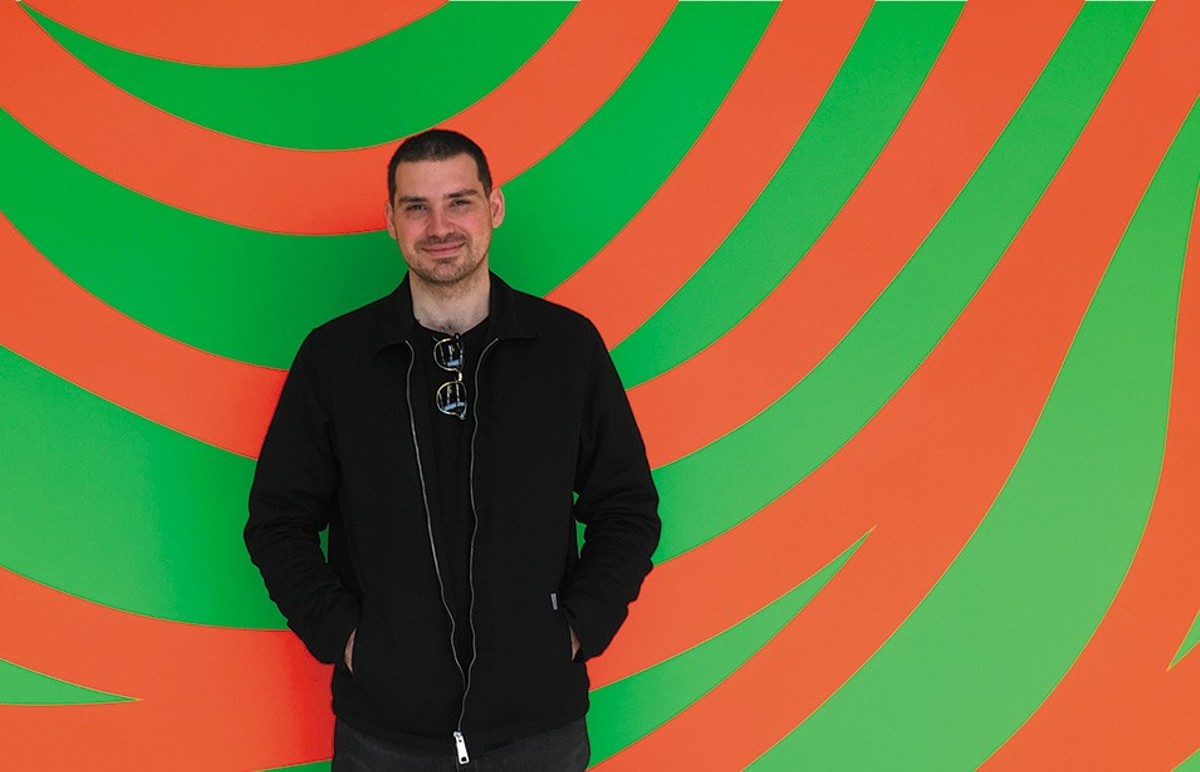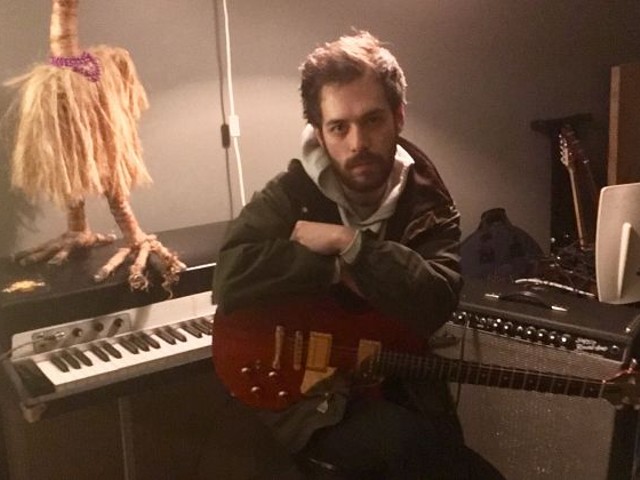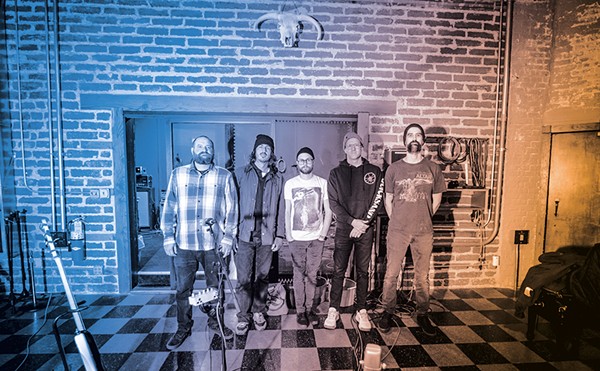For much of his professional career, Bret Schneider has worked in the art world. That includes his education at the Art Institute of Chicago, a stint at the Pulitzer Arts Foundation here in St. Louis and, most recently, a month-long stay in Austin, Texas, to help with the installation of a new exhibition at a history museum there.
"It's a weird thing to say, but a lot of people don't know how to do simple things like hanging paintings or hanging photographs," he says by phone from Austin. "It's a strange thing that it's become an in-demand thing."
That's a particularly practical application of his background in the arts — the literal, physical placement of the material in a room — but much of Schneider's own work has tended toward the theoretical side. As a musician, his recently released song set Constellations takes that fascination with theory and sets it loose in computer-generated algorithms that spin out synthesized patterns of various tones and textures.
Schneider grew up in Cleveland, where his earliest forays into electronic music were inspired by what he calls "the alienated-bedroom-producer idea." His education in Chicago was focused in sound art, a field of study that is concerned with the physics of sound much more than musical theory or traditional composition.
"I went to study it because I heard some composers that I really liked, and it was really compelling to hear these works that were emphasizing spatial and acoustic environments and were playing with the science of sound," he says. "It wasn't really music, which was always really interesting to me as an idea."
Many of the artists and composers Schneider studied focused on physical material and sonic space, and as he re-engaged with his own musical creations about five years ago, he says he was initially thinking about what he calls "the material of vibration." But as atonal, noise and experimental musics have continued to evolve with the proliferation of modular synthesis, Schneider took the roots of his sound back to the bare necessities: simple waveforms without any complex harmonics or overtones.
"Constellations was an attempt to get back to simplicity," he says. "We've been immersed of this sound-expansion world where you can achieve any sound you want to. It's not really about the complex timbres you're making; it's about evolving over time. I just went back to the fundamental waves rather than work with complex tonality."
That simple palette differentiates his album from other similar releases, which will often seek to load a tone with as much harmonic information as it can bear before stripping it away again.
"Whether that's expressed on a computer or modular synth or a guitar, it's about the ability to hear changes over time," Schneider says. The goal, he says, is to experience "the way sound events occur over time."
Opening track "Imi's Song" pairs looping patterns of soft, plucked tones with more resonant trails that trip up and down the scale. The sequences don't quite intersect or speak to one another, but their proximity gives a plangent, moody undertone to the three other tracks, which often employ more aggressive tones and a greater rate of arpeggiation.
"It's definitely a change from the way I work, in hearing glacial changes in the way a pattern changes into another pattern," Schneider says of the pace of several compositions. "I don't want to describe it as melodic but it has a more traditional palette."
Schneider says that while his compositions take a lot of work on the front end — writing algorithms, reducing musical events to numeral values — his entire goal is to create environments where the musician, such as it were, plays no role in the compositions' performance.
"I was trying to create a system where I could press play before I go to work and have it generate eight hours of music," he says. "It didn't quite happen that way; it's hard to break that spontaneity barrier. The holy grail of generative music is that it will develop something on its own without a human hand."
Schneider's album was released through local imprint Distant Bloom, launched by Oxherding's Fitz Hartwig last year as an outpost of this type of generative and modular music (the label also released a tape by the Portland-based artist Ann Annie, one of the leading lights of YouTube's robust modular-synth community). The label's releases, to date, celebrate slow, ponderous and largely serene events of electronic music where evolutions are subtle but cumulative for the attentive listener.
He knows, though, that ideal circumstances don't always exist and that artists are lucky to grab ten minutes of the modern listener's magpie brain. "That's an interesting problem, to make it as complex and dense as you can," he says of distilling his work into something compact. "It's important that the listener hears the permutations of the pattern."






